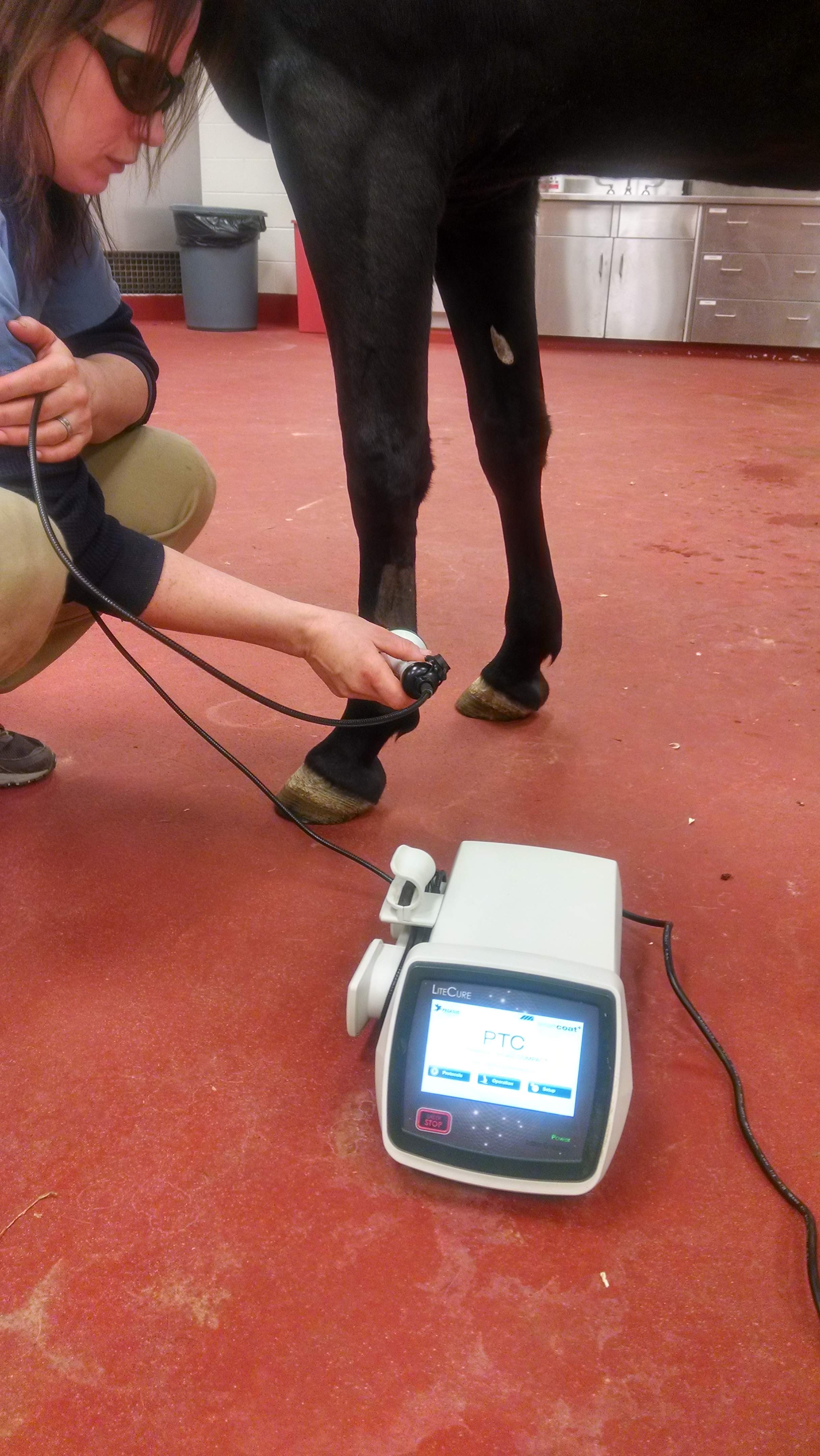Equine Therapy Programs: Transforming Lives One Trip at a Time
Equine Therapy Programs: Transforming Lives One Trip at a Time
Blog Article
Just How Laser Treatment in Equine Therapy Is Transforming Veterinary Treatment for Steeds
Laser therapy has actually arised as a transformative method in equine vet care, giving a non-invasive solution that accelerates healing and improves total health and wellness. The mobility and adaptability of laser treatment tools additionally emphasize their growing indispensability among vets.
Comprehending Laser Treatment

The modern technology behind laser therapy is grounded in the concept of photochemistry, where photons are soaked up by chromophores within cells, causing enhanced ATP manufacturing and modulation of reactive oxygen varieties (Equine Therapy). This, subsequently, advertises mobile proliferation, reduces swelling, and accelerates recovery. Vet practitioners use different kinds of lasers, consisting of low-level lasers (LLLT) and high-power Course IV lasers, depending upon the details restorative goals and the nature of the equine condition being dealt with
Different laser wavelengths and power settings are meticulously picked to target numerous tissue midsts and accomplish desired professional results. Security protocols are paramount, as incorrect usage can bring about thermal damage or suboptimal therapeutic impacts. Thus, a detailed understanding of laser therapy's devices and applications is important for its reliable execution in equine veterinary method.
Advantages for Equine Health
The myriad advantages of laser therapy for equine health encompass boosted recovery, discomfort reduction, and boosted mobility. This innovative therapy technique leverages certain wavelengths of light to permeate tissues, boosting cellular function and promoting rapid cells repair work. The non-invasive nature of laser treatment guarantees minimal stress and discomfort for the horse, facilitating a smoother healing procedure.
Enhanced recovery is one of the foremost advantages, as laser therapy increases mobile regrowth and collagen synthesis. Discomfort decrease is achieved via the anti-inflammatory results of laser treatment, which decreases swelling and reduces the production of pain-inducing chemicals.
By decreasing swelling and discomfort, and boosting cells fixing, laser treatment assists in restoring joint function and muscle flexibility. Thus, laser treatment stands as a transformative tool in contemporary equine veterinary treatment.
Usual Problems Treated
Laser therapy has arised as a versatile therapy choice for a range of common equine conditions. Amongst these, bone and joint injuries are especially amenable to laser treatment. Equine Therapy. Soft tissue injuries, such as tendonitis and tendon stress, benefit from the anti-inflammatory and analgesic results of laser treatments, which accelerate recovery and decrease discomfort. In addition, laser treatment works for conditions like osteo arthritis, where webpage it aids mitigate joint inflammation and advertise cells repair work.
Wound management is an additional area where laser therapy has actually shown considerable promise. Chronic injuries or slow-healing ulcers can be especially challenging in horses, however laser therapy improves mobile regeneration and enhances blood flow, thus quickening the healing procedure. Laser treatments have been efficiently employed in handling unguis conditions such as laminitis and abscesses, minimizing discomfort and advertising faster healing.

Modern Technology Behind Laser Treatment
Past the myriad conditions treatable with laser therapy, the technology itself advantages better evaluation. At the heart of laser therapy is making use of specific wavelengths of light to pass through cells and generate biological responses. These wavelengths, usually ranging from 600 to 1000 nanometers, are uniquely absorbed by chromophores in the skin, muscular tissue, and other cells, instigating a cascade of cellular occasions.
Laser gadgets used in vet medication usually use low-level laser therapy (LLLT) or cold laser therapy. Unlike high-powered surgical lasers, these gadgets operate at reduced power levels, enhancing restorative benefits while lessening thermal damages. The energy from the laser light promotes adenosine triphosphate (ATP) production, enhances cellular metabolic rate, and increases cells repair service procedures.

Success Stories and Study

Showcasing the substantial benefits of laser therapy, numerous success stories and case studies illuminate its transformative influence on equine health and wellness. One such situation includes a pureblooded racehorse struggling with persistent tendonitis. Typical therapies produced marginal enhancement, however after integrating laser therapy right into the program, the equine displayed substantial decreases in swelling and discomfort within weeks, eventually returning to affordable auto racing.
An additional engaging example features a dressage horse diagnosed with extreme neck and back pain, restricting its performance. A veterinary group utilized low-level laser therapy (LLLT) to target the inflamed locations, causing significant improvement in flexibility and a notable decline in discomfort. Over several sessions, the steed reclaimed its peak type, showcasing the efficacy of laser treatment in attending to musculoskeletal issues.
In addition, a research study conducted at a leading equine facility taken a look at 50 equines with various soft cells injuries treated with laser therapy. The outcomes were striking: 85% of the equines demonstrated increased healing times and improved flexibility. These situations underscore the convenience and efficiency of laser treatment in equine medicine, offering a non-invasive, scientifically-backed technique to enhancing recuperation and performance in steeds.
Conclusion
Laser treatment is transforming equine vet care by giving a non-invasive treatment that increases healing, lowers inflammation, and reduces discomfort. With its efficiency view in dealing with a series of problems, from musculoskeletal injuries to chronic disorders like osteoarthritis, this modern technology considerably boosts equine health and wellness and mobility. The mobility and flexibility of laser therapy better underscore its transformative influence on veterinary techniques, solidifying its function as an important device in modern-day equine healthcare.
Report this page